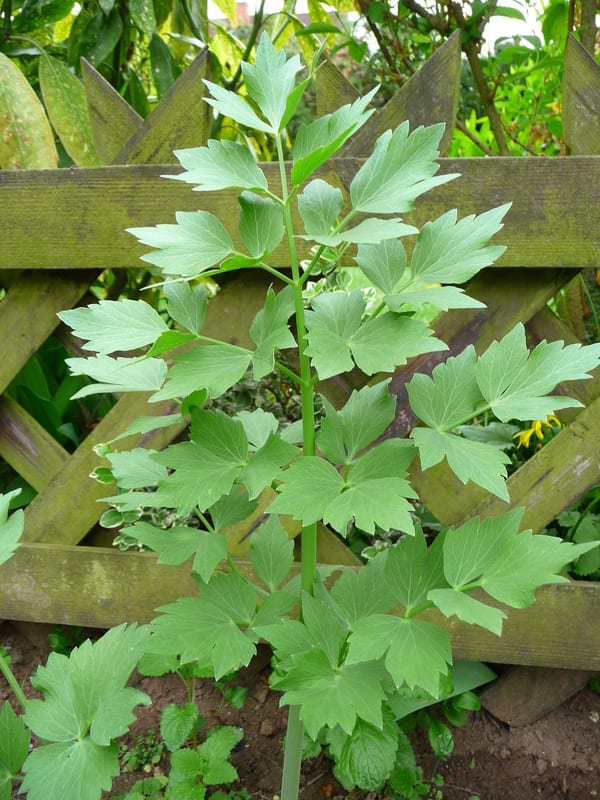
🌿 Morphology
🌞 Growing conditions
🌍 Origin and family
🌾 Uses
Warning: Despite the care taken in writing this sheet, it is essential to cross-reference sources before using or consuming any plant. When in doubt, consult a qualified professional
Permaculture uses
Lovage leaves, stems, and seeds are edible and have a celery-like flavor, used in soups, salads, and as a flavoring agent. Roots can be used as a vegetable. The plant attracts beneficial insects like hoverflies, acting as a pollinator attractant in the garden. It also has mild diuretic properties.
Permapeople description
Harvest the leaves earliest after around 90 days and the roots after one year.
Lovage (Levisticum officinale) is a perennial herb that is native to the eastern Mediterranean region and parts of central and southern Europe. It can grow to be quite large, with a thick, hollow stem that can reach up to six feet in height. The leaves of the plant are large and deeply lobed, resembling those of celery, and the plant produces small, yellowish-green flowers that bloom in the summer.
In terms of growing conditions, lovage prefers full sun and moist, well-drained soil. It can be grown from seed, but is best propagated from root cuttings or divisions of established plants. Lovage can be grown in a variety of climates, but does best in temperate regions with cool summers.
Lovage is an edible plant, and both the leaves and stems can be used in cooking. The leaves have a strong, celery-like flavor and can be used in salads or as a herb in a variety of dishes. The stems can be cooked and eaten like celery, and the plant's seeds can be used as a spice. After harvesting, the leaves and stems can be stored in the refrigerator for several days, or they can be dried or frozen for longer-term storage.
In addition to its culinary uses, lovage has a number of other uses as well. It has been used medicinally to treat a variety of ailments, including digestive problems and respiratory disorders. It is also said to have fertility-enhancing properties, and is sometimes used as a natural insect repellent. In the garden, lovage can be used as a natural mulch and as a windbreak, and it is sometimes planted as a ground cover or for erosion control.
Lovage is also attractive to a variety of wildlife, including bees and butterflies, which are attracted to its flowers. In addition, the seeds of the plant are a favorite food of some species of birds. Overall, lovage is a versatile and valuable plant that can be a useful addition to any garden or farm.
Botanical description
Levisticum officinale is a tall, herbaceous perennial plant in the family Apiaceae, native to Southern Europe. It grows to 3–9 feet tall, with a basal rosette of large, tripinnate leaves and stout, hollow stems. The flowers are yellowish-green, produced in large umbels in late spring to early summer. The fruit are dry schizocarps. The entire plant is aromatic, with a strong celery-like fragrance.
Companion planting
Generally considered a good companion plant, attracting pollinators. Avoid planting near fennel as they may cross-pollinate.
Propagation methods
Seed sowing (direct sow or start indoors), root division in spring or autumn, cuttings from young shoots in spring.
History and traditions
Lovage has been used medicinally and culinarily since ancient times. The Romans spread its cultivation throughout Europe. It was traditionally used as a digestive aid, diuretic, and expectorant. In some cultures, it was believed to have aphrodisiac properties.
Usage calendar
Flowering: May-July; Harvesting leaves: Spring-Autumn; Harvesting seeds: Late Summer; Planting: Spring or Autumn; Pruning: After flowering to maintain shape.
